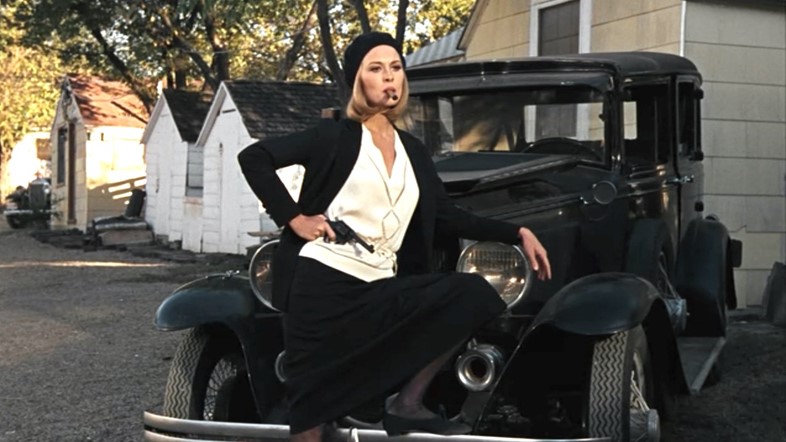She became infamous as one half of criminal couple Bonnie and Clyde – here we take a look at the lawless Bonnie Parker's seminal moments
Bonnie Parker is likely better known as one half of early-20th-century outlaw couple Bonnie and Clyde – a duo so famed and shrouded in intrigue that pop culture continues to draw inspiration from their exploits to this day. In a crime spree that lasted just over two years, Bonnie Parker and Clyde Barrow became the most sought-after criminals in America, with their bank robberies and murders making headlines and titillating the Depression-era public. Equally as fascinating is the love story at the centre of this tale: Parker and Barrow were utterly infatuated with one another, and unquestionably loyal throughout their escapades. Parker was prepared to die by Barrow’s side, which she eventually did in 1934.
Parker has been source of fascination since her front-page-of-the-newspaper days in the 1930s – her style icon status followed later, due in no small part to Faye Dunaway’s 60s blonde crop and kohl-rimmed eyes in the 1967 Arthur Penn-directed crime drama Bonnie and Clyde. Just ahead of the anniversary of her birth, on October 1, 1910, we dissect her singular intrigue.
Defining Features
Parker’s complicity in the Barrow gang exploits adroitly confirms that she was something of a fool for love. Not only did she apparently have, dare we say it, a type – her husband Roy Thornton, whom she married when she was just shy of 16, went to prison for robbery before she even met her Clyde – but she made immortalising commitments to the men in her life. When, in 1934, Parker and Barrow were shot and killed by the police, Parker was still wearing her wedding ring (from her marriage to Thornton; she and Barrow were never legally married) and bore a tattoo on her inner thigh with the names Bonnie and Roy in two hearts.
Once she met Barrow, Parker took to poetry to document their love. In a poem originally titled The Trail’s End, and later named The Story of Bonnie and Clyde following posthumous publication, Parker writes hauntingly: “Some day they’ll go down together;/ And they’ll bury them side by side/ To a few it’ll be grief—/ To the law a relief—/ But it’s death for Bonnie and Clyde”. The poem is read aloud in the 1967 film by Faye Dunaway, who played the femme fatale to great acclaim opposite Warren Beatty’s Barrow.

Seminal Moments
The only remaining photos of Parker are from undeveloped film found by police in the midst of the manhunt at a former resting stop of the Barrow gang in Missouri. Parker – famously branded by the contemporary press a “a cigar-smoking gun moll” following the images’ publication – is seen posing with a cigar and a gun in hand, one foot leaning on the bumper of a car. Quite literally criminally self-assured, Parker stares down the lens with intimidating ease in the photograph, which catapulted her and the gang to nationwide infamy. In other photographs from the same discovered film, Parker leans on Barrow and lets her high heel-clad feet dangle in front of the same car – though she would later forgo her heels in favour of flat shoes as they travelled around America evading capture.

She’s an AnOther Woman Because...
There’s much to be said for Parker’s steadfast loyalty to Barrow and their way of life. She’s the anti-heroine of the anti-establishment couple, a woman who acted with vigour in a time when women were not afforded equal rights, and has since been seen as Barrow’s equal in the narrative. One senses that Parker refused to be sidelined: her authoritative stance alone in the uncovered photographs attest to that. Her zealous rebellion – though too extreme to truly emulate – will no doubt continue to mystify and enliven for many a year to come.
